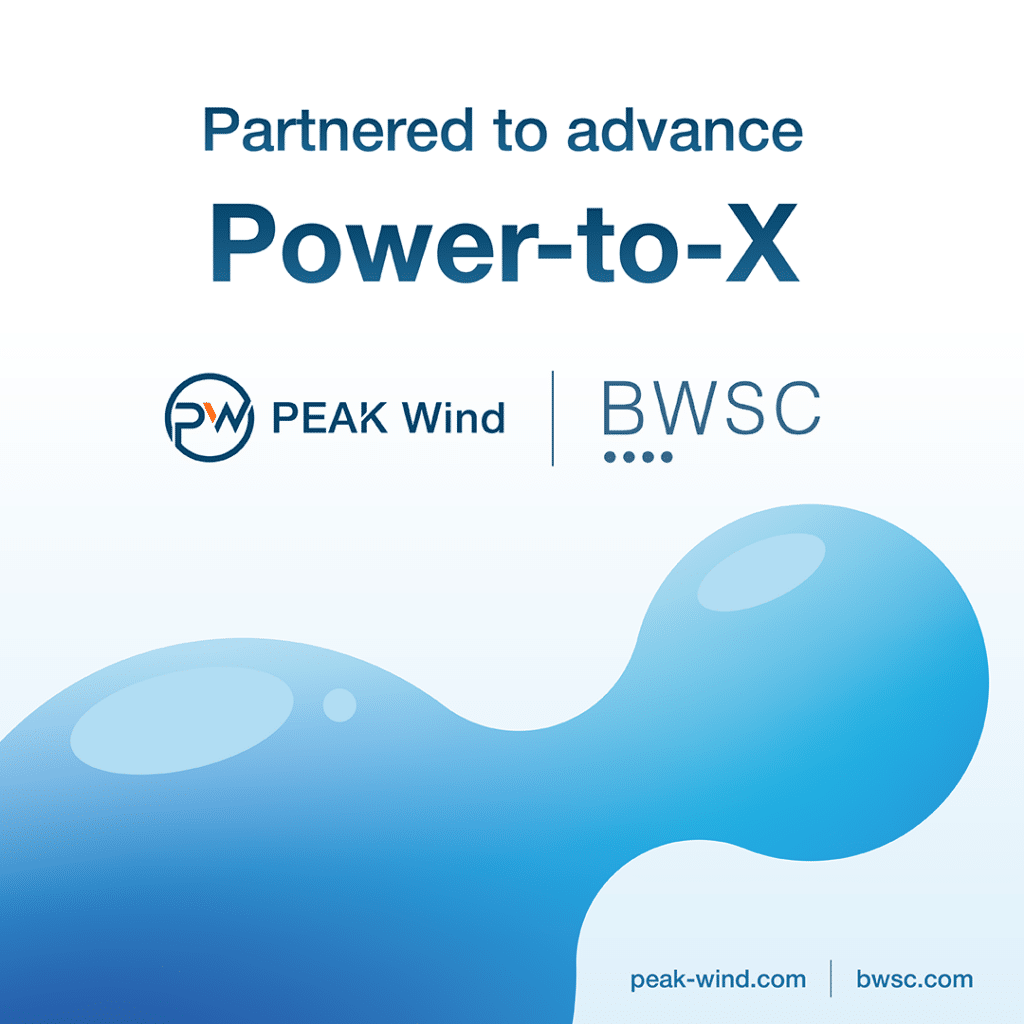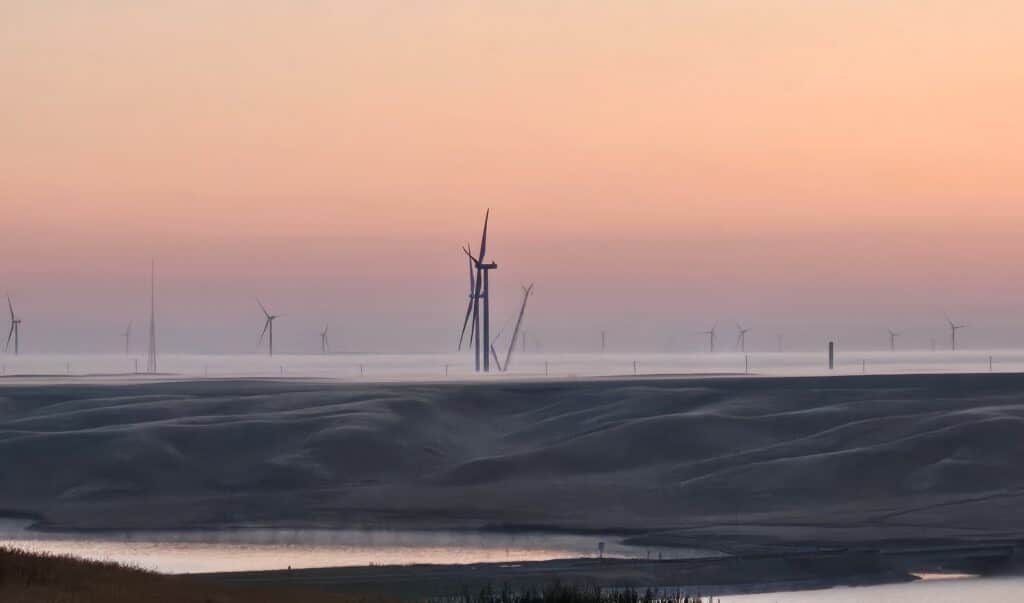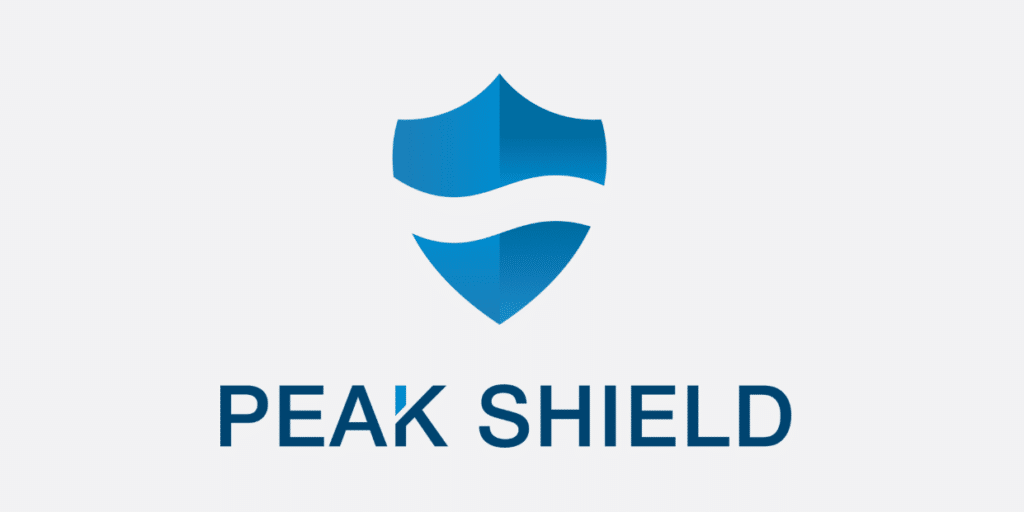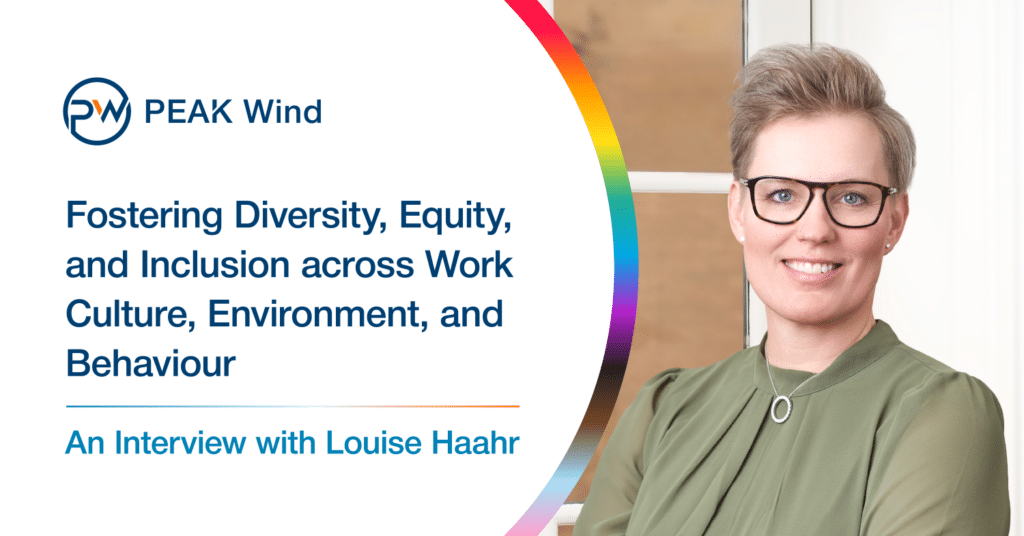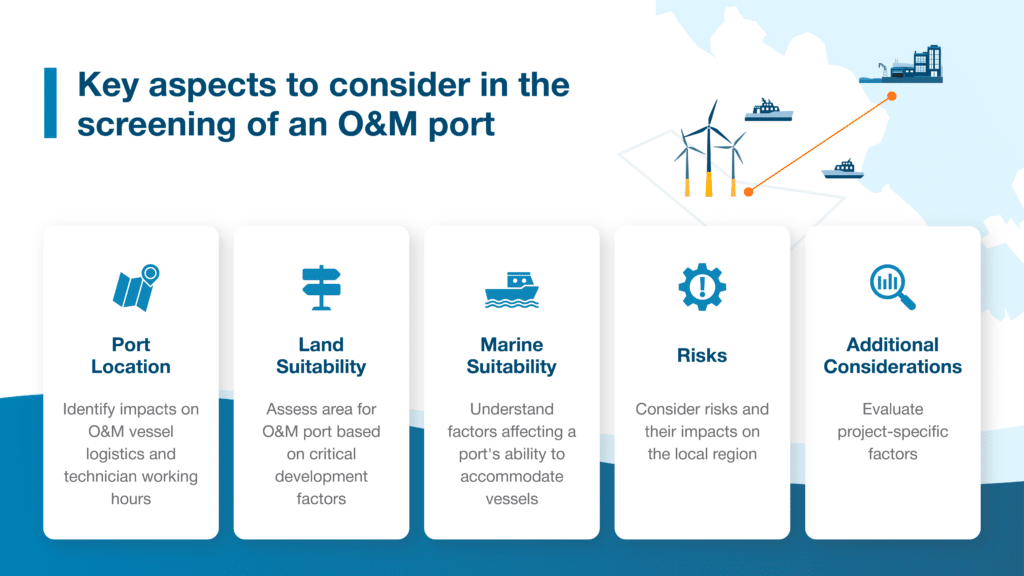
Why should you read this article?
- To understand which key aspects should be considered in the initial screening of potential Operations and Maintenance (O&M) ports for an Offshore Wind farm (OWF)
- Gain insights into the typical challenges and identification of potential risks in the screening process
- See an example of how the port selection can impact the availability losses of an offshore wind project
As an offshore wind developer, selecting a port for the daily O&M activities of an OWF is a critical step in preparing for a successful operational phase of the project. Proper O&M port selection ensures compatibility with the project’s requirements, providing benefits such as (i) significantly improving the effectiveness of daily O&M activities, (ii) optimising OPEX, and (iii) reducing the downtime of the OWF. Example use cases that call for a port assessment can include:
- Early site screening (i.g. bid preparation): to identify and confirm a logistical setup for a given OWF i.e. in bid preparation, a port selection must be made.
- Dialogue with local stakeholders: when initiating dialogue with local stakeholders regarding the feasibility of a potential port, a port assessment can provide a more informed foundation for these discussions.
- Prior to signing an MoU with a port (and later a lease), it is best to complete a port assessment to determine the feasibility of the location, potential limitations, risks, and opportunities of a given port location. This assessment can include having viable port options at the MOU (or lease) stage for securing a port for the project.
Furthermore, a thorough analysis of port locations can help mitigate unforeseen problems that may be specific to the region or project. Therefore, performing a comprehensive port assessment of potential locations is essential.
A systematic approach to assessing potential O&M ports is useful to ensure all relevant aspects are covered in the initial screening process during the early development phase of the OWF. The criteria for identifying a suitable O&M port typically include the following areas: (i) port location, (ii) land suitability, (iii) marine suitability, (iv) risks, and (v) additional considerations.

The distance from the O&M port to the OWF site affects the travel time to the site and, consequently, the effective working hours that technicians can spend on-site. Distance also plays a role in selecting the logistical configuration (e.g., CTV, SOV, Helicopter) needed to transport technicians to the site. The choice of logistical configuration to use depends on various factors, including site characteristics, the speed of the selected vehicle, passenger carrying capacity, and wave height limits (excluding helicopters).
If an OWF is located farther from its O&M port, resulting in fewer effective technician working hours, the OWF may experience increased downtime due to insufficient time for on-site repairs. This can also lead to higher OPEX costs for performing scheduled maintenance due to the increased number of visits required to complete the scope.
To illustrate, let’s take a simple example demonstrating the impact of distance on the downtime of an OWF and the net hours technicians have for performing maintenance activities within a single 12-hour working period. For an offshore wind project with 30 WTGs using one CTV for O&M activities throughout the year, PEAK Wind would estimate the following losses shown in Figure 1. These impacts may vary based on project-specific parameters, so the results should be treated as a general example.
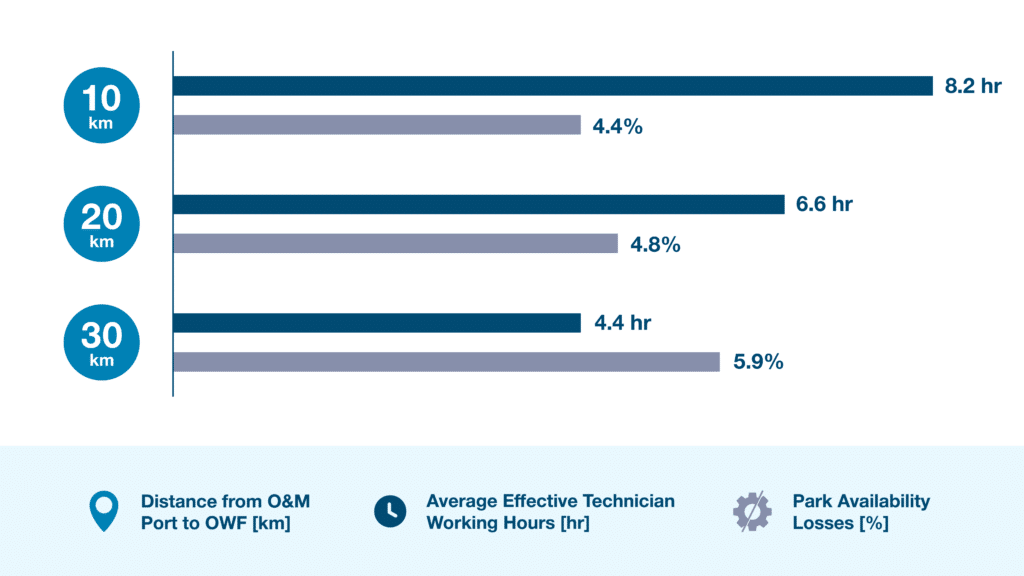
Figure 1. Impact of O&M Port Distance on the Average Effective Technician Working Hours & Park Availability Losses for an OWF
The distance of the port from the site will strongly influence the logistics vessel selected (e.g. CTV, SOV). It should be noted that if an SOV is used, the distance to the site will not be as critical of a factor, as SOVs remain offshore, and, therefore are not affected by losses associated with travel time to and from the site.
Key considerations for determining the location of the O&M Port can include:
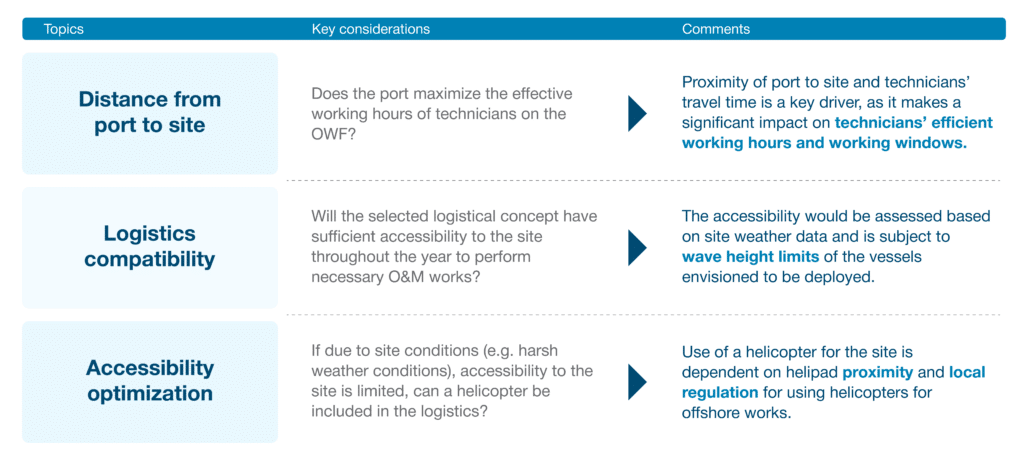

A port under consideration should either meet minimum O&M base requirements or have the potential to be developed to meet such requirements, ensuring that necessary O&M work may be performed unabated. Matters that should be taken into consideration include:
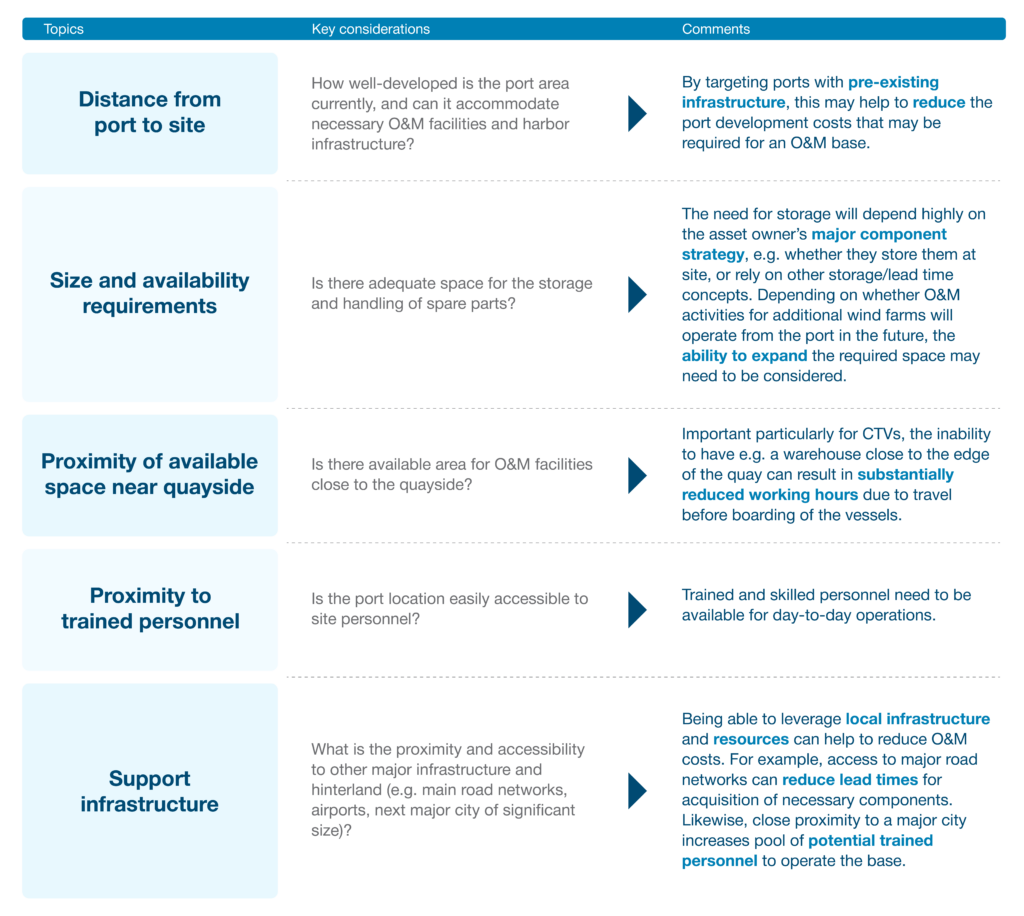

A port’s ability to accommodate vessels (e.g., CTV, SOV) servicing the OWF site must be investigated. Various considerations include:
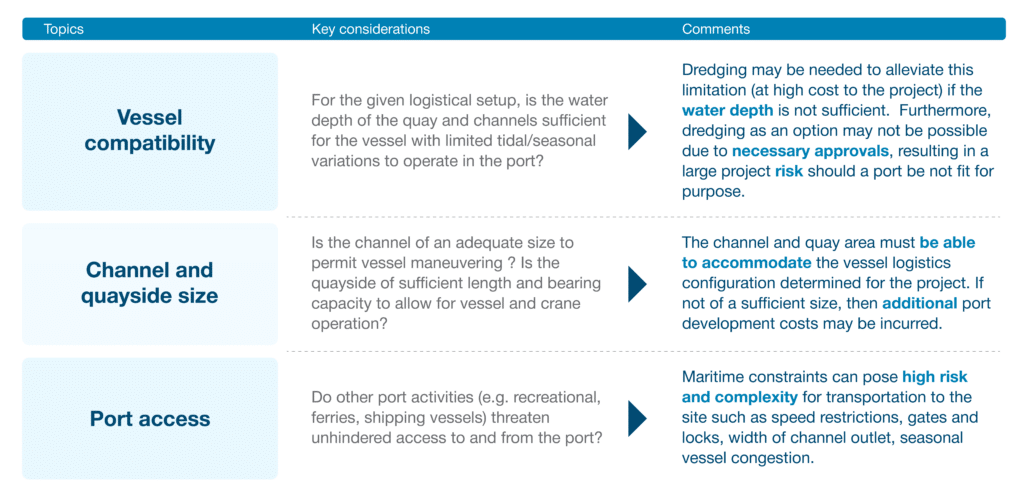

While a port may meet several O&M requirements, certain risks may arise that should be taken into consideration, lest the project owner risks jeopardizing the successful operation of the OWF. Risks that should be investigated may include:
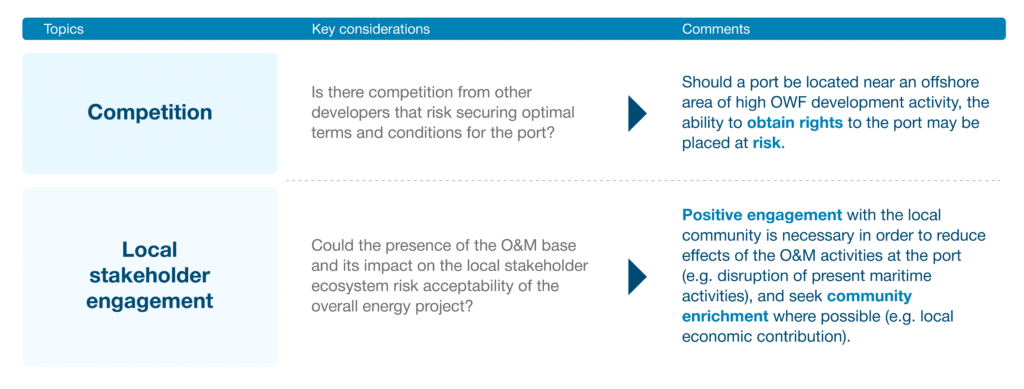

Each port to be assessed may be subject to additional factors that could pose a risk to the success of the project (e.g., risks unique to the region where the site operates) if not properly considered. It’s important that these project-specific matters are evaluated, including:
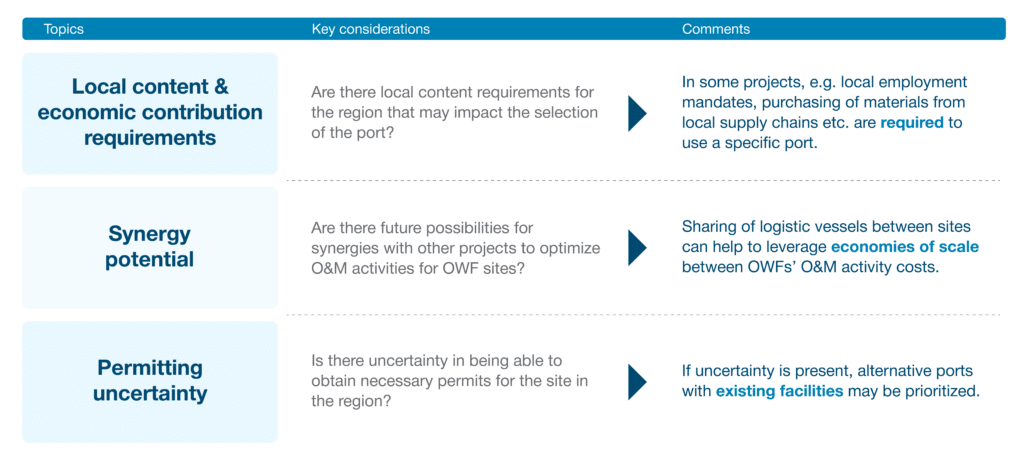
Keep in mind…
1. Start early
Early engagement with an O&M port feasibility analysis provides sufficient buffer time to ensure a smooth and successful operational phase, giving your OWF an optimal location for performing O&M activities. Additionally, taking action early can reduce the risk of competition when obtaining rights to operate at a potential O&M port.
2. Proximity is key
The distance between your O&M port and the OWF is the highest priority when it comes to O&M port selection. While certain aspects of a project can be compromised on (e.g., port development level), distance from the site is a deciding factor as it typically impacts the selection of the logistical configuration required for the OWF. This cost level is typically of such a great magnitude that it makes investment in O&M port development worthwhile.
3. Custom analysis
As detailed, there are a series of topics that should be considered and deliberated on when performing an O&M port assessment for a project. Given each project’s unique characteristics, involving subject-matter expertise in the process can lead to a better assessment and, in turn, a more successful operational phase for an OWF.
Want to learn more about port assessment for your offshore site?
Just reach out to us, we are always happy to answer your questions and engage in discussions about OT security for optimized operations and asset management.
Leoni Christensen | Head of O&M Strategy, Concepts & OPEX | Get in touch
Christian F. Viktrup | Consultant in O&M Strategy, Concepts & OPEX | Get in touch
